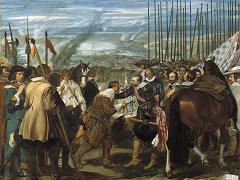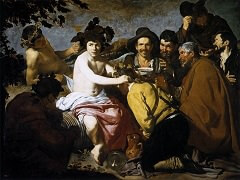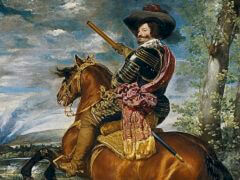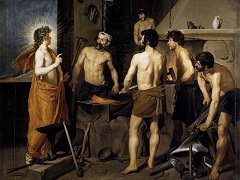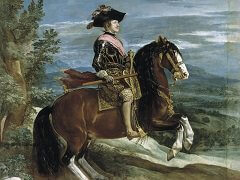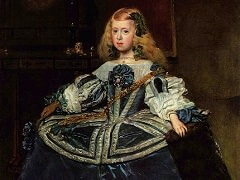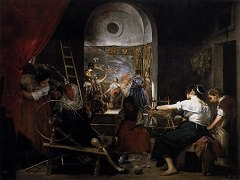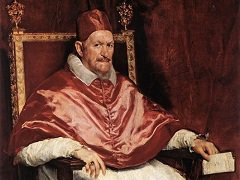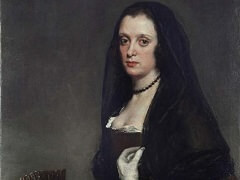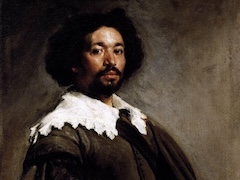Old Woman Frying Eggs, 1618 by Diego Velázquez
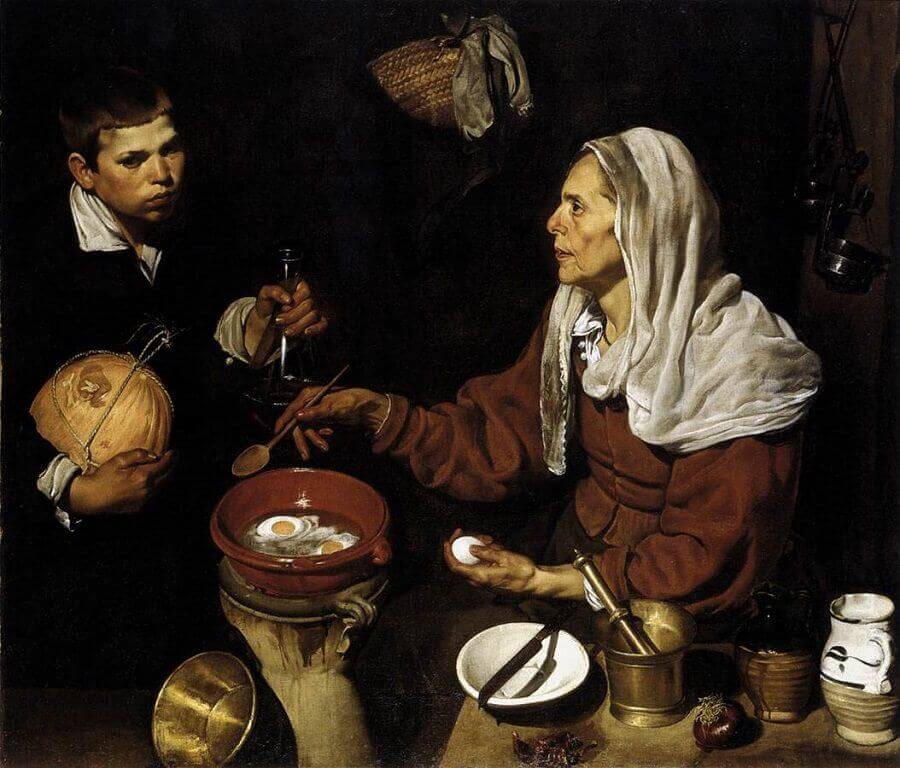
This painting is one of several early genre scenes by Velázquez for which there are no known precedents in Seville. Using a powerful, focused light, itself a novel feature, Velázquez creates a tour de force of naturalistic painting in which different shapes, textures, and surfaces are miraculously brought to life.
The Old Woman Frying Eggs shows an elderly cook sitting in front of a small clay vessel in which she is cooking eggs over a charcoal fire. The artist's eye has observed and recorded every telling detail, down to the thin sliver of glowing coals that warm the eggs which are absent-mindedly tended by the woman. The worn but fine features of her face, beneath the confident painting of the veil on her head, bear witness to a life well lived. There is a serious, meditative quality about the woman's figure, and the boy with the melon under his arm and a carafe of wine in his hand looks out of the picture at us with comparable gravity. The contrast of youth and age conveys the transience of life, and the egg in the woman's hand suggests associations, familiar at the time, with the mutability of all earthly matter and with another life beyond the grave. The background is dark and indistinct, in contrast to the often over-crowded backgrounds of Dutch kitchen scenes.
An interesting feature of this picture, the main subject of which is the cooking of eggs in a clay pot, is the honeydew melon with a cord slung crosswise around it, making it resemble an imperial orb.

